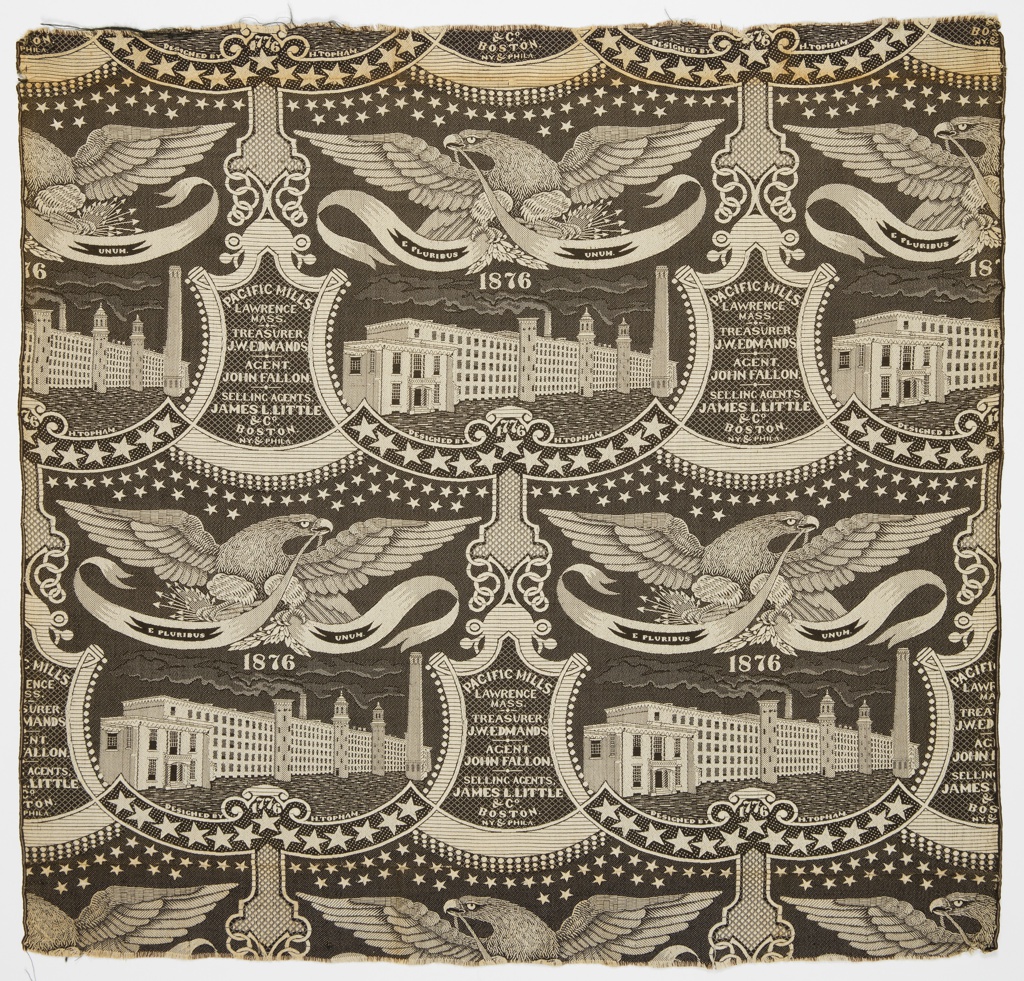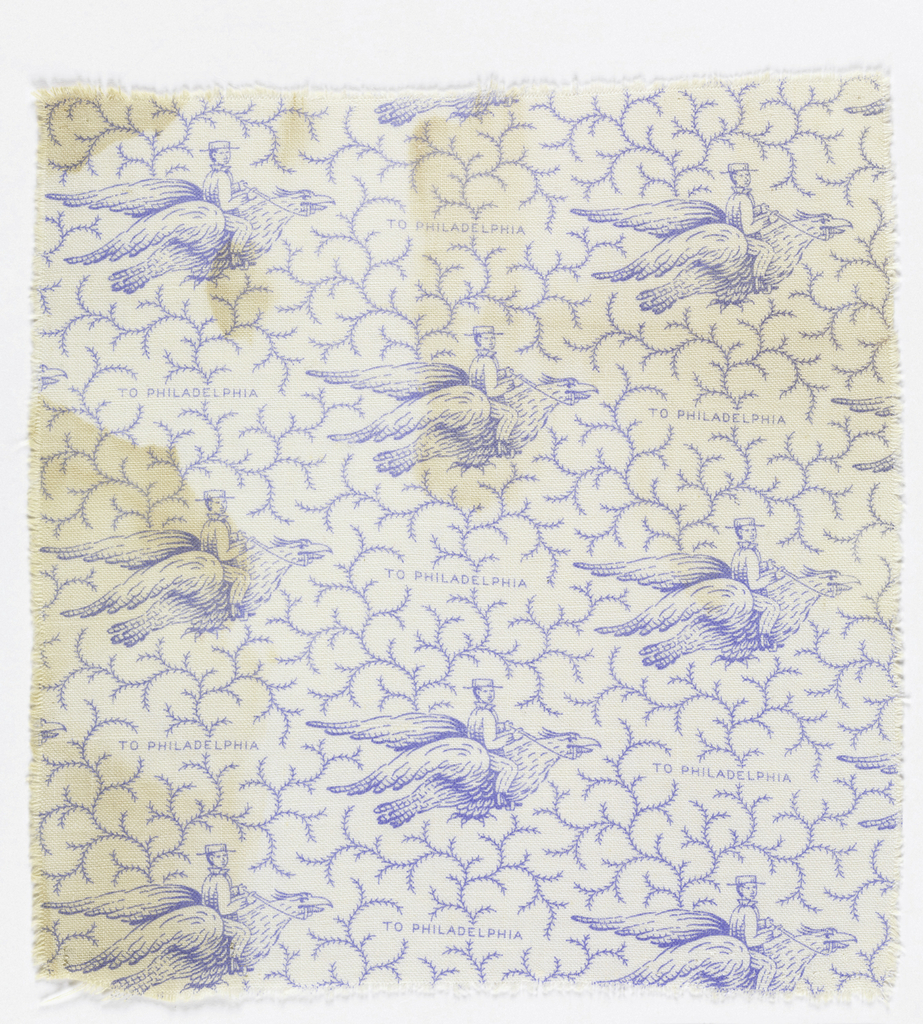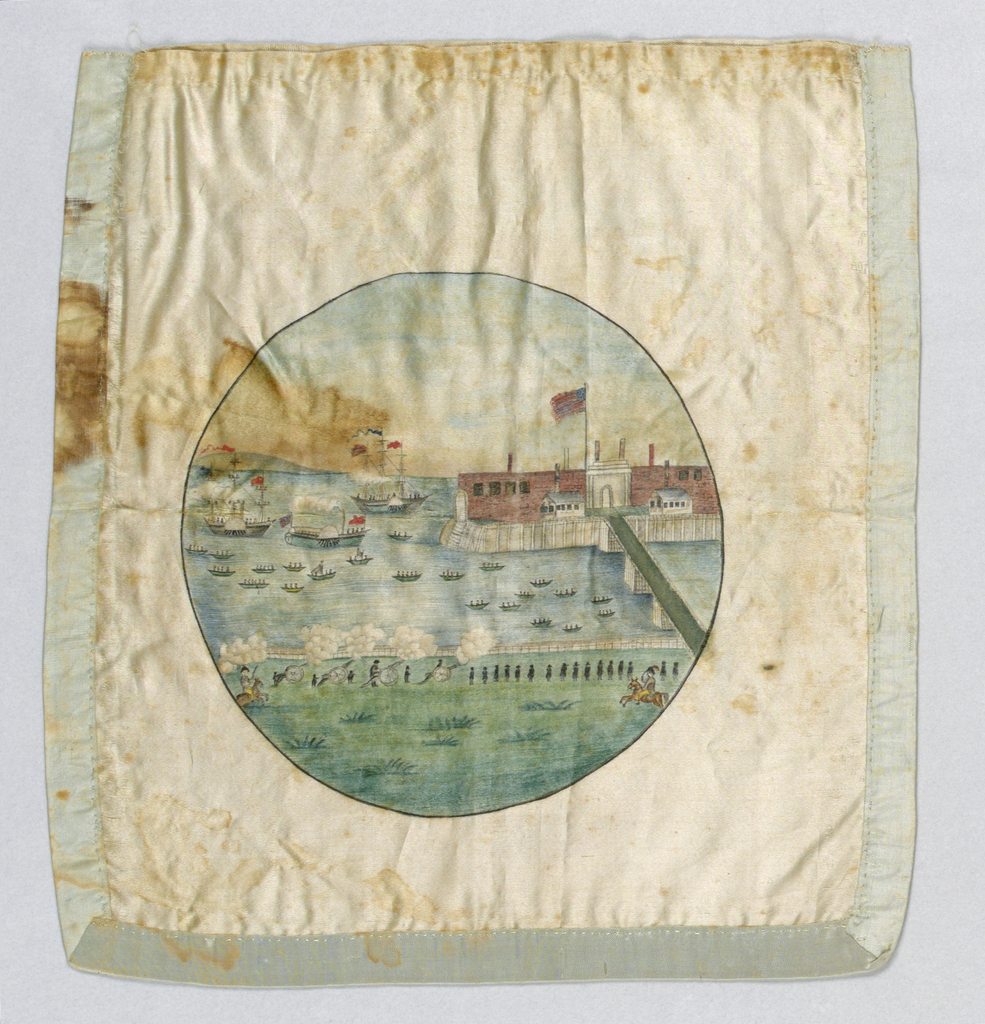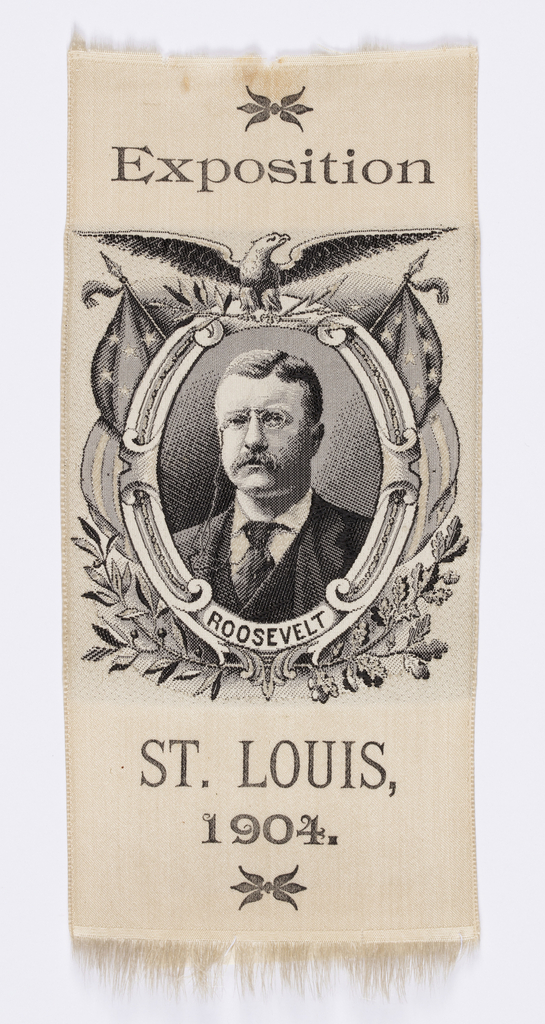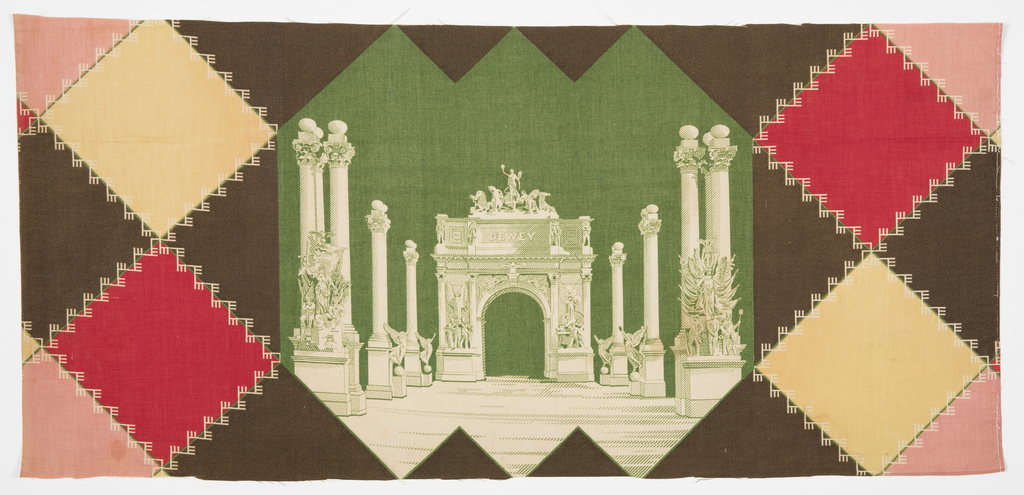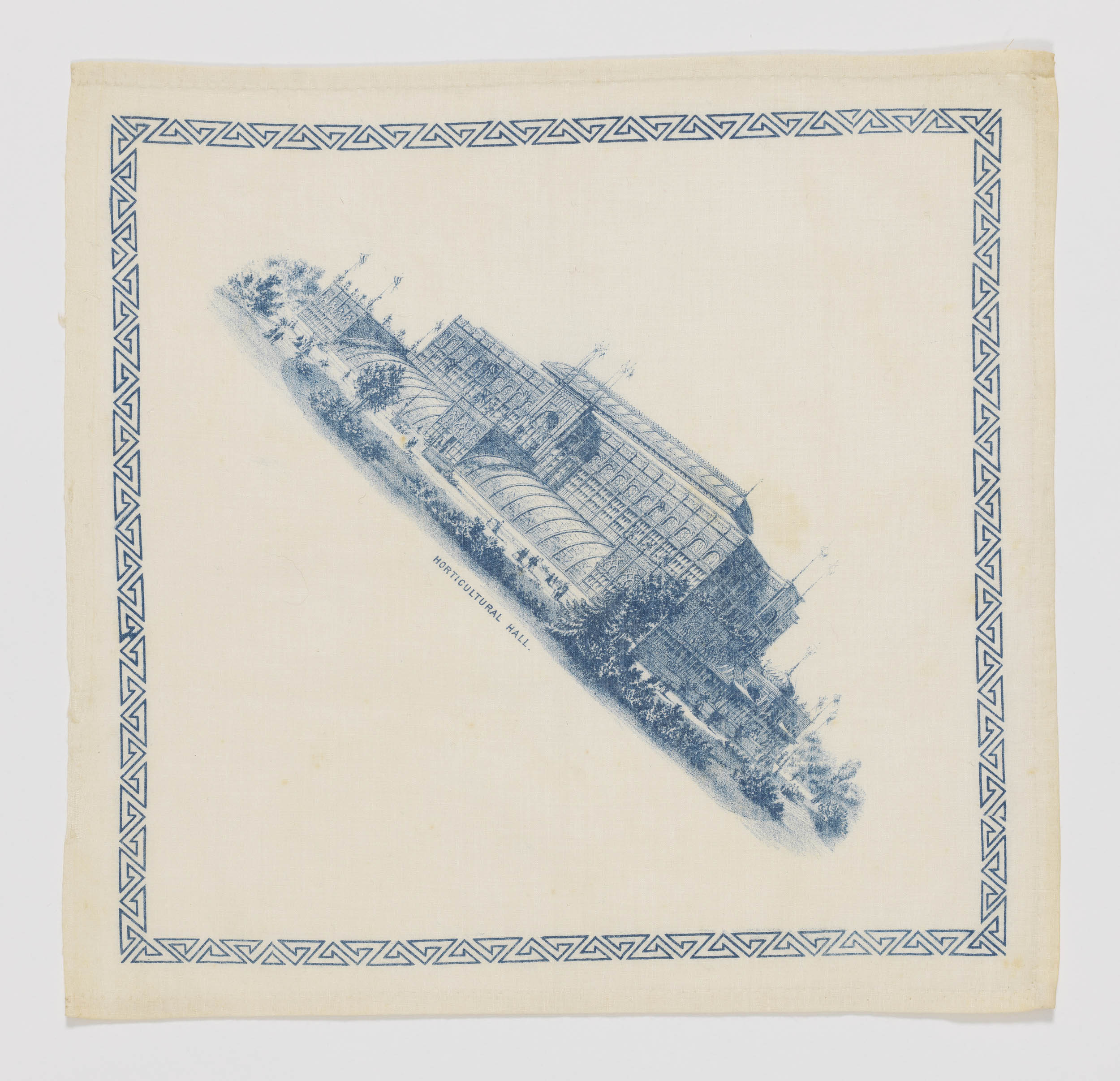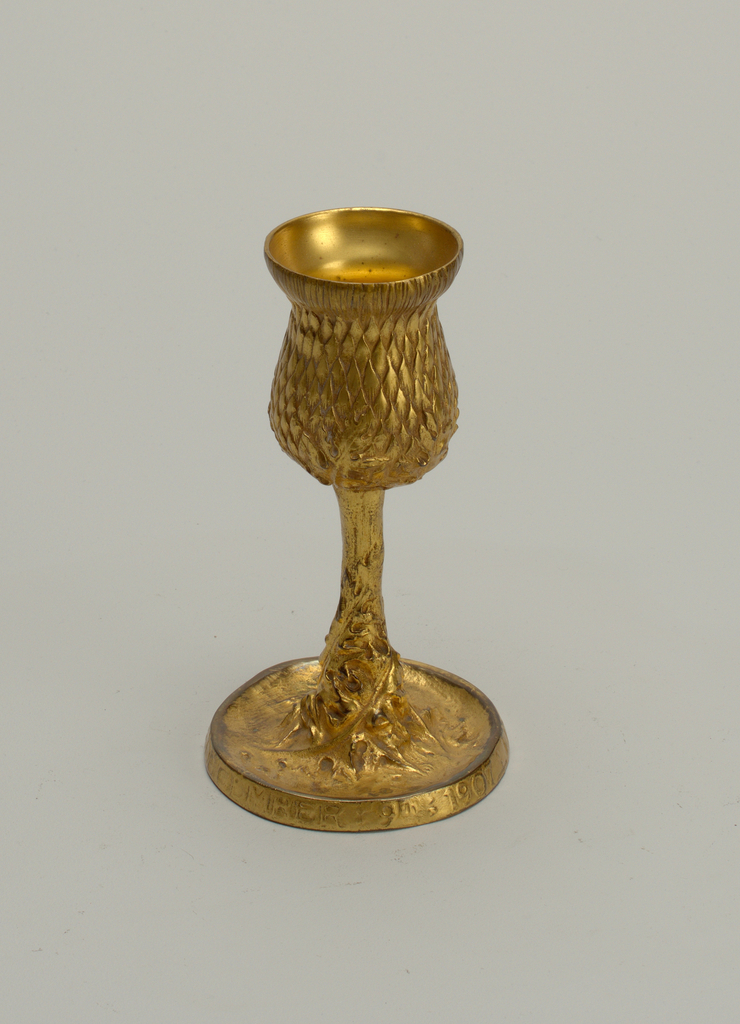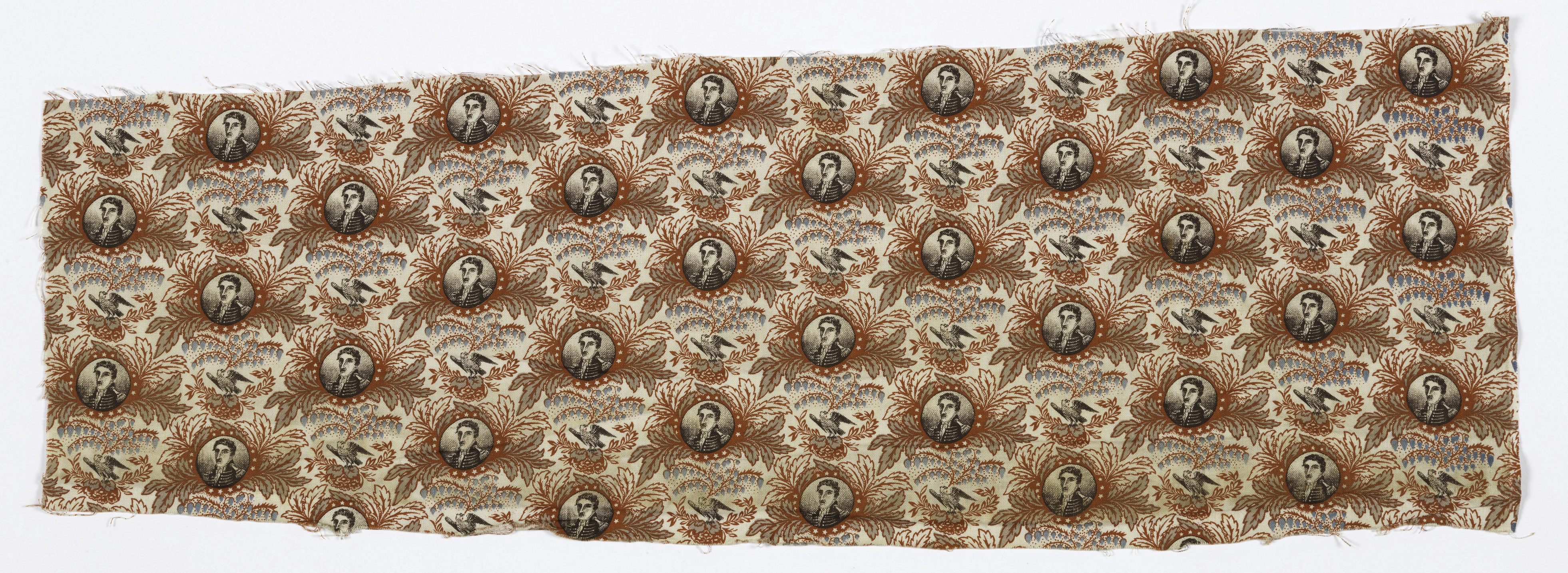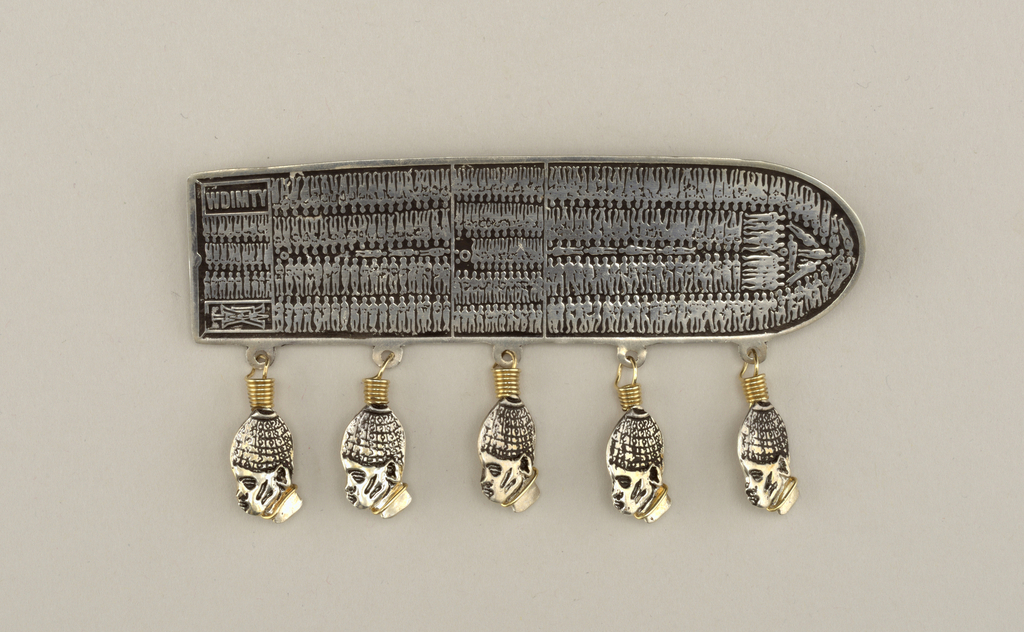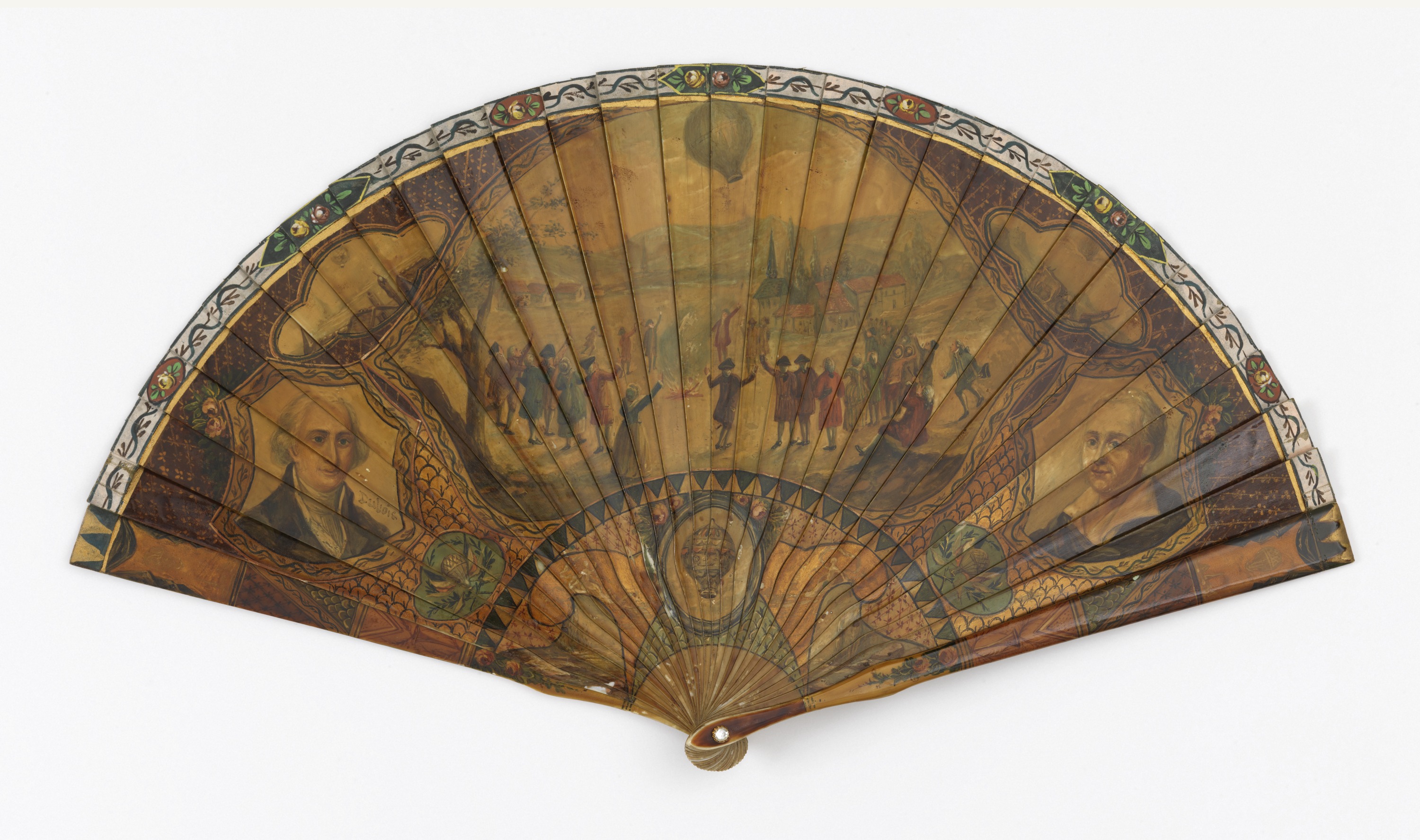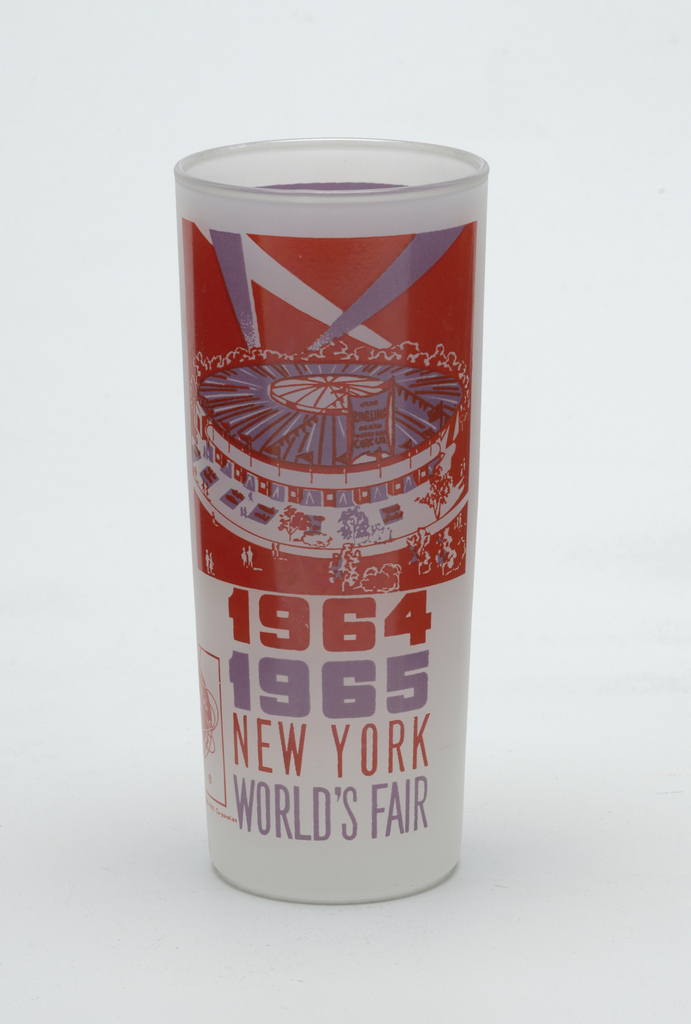This woven textile by Pacific Mills serves as a commemorative of the 1876 US Centennial while also promoting the textile manufacturer from Lawrence, Massachusetts – one of the largest textile producers in the Western Hemisphere during the nineteenth century. Woven in black and cream, the unusual composition has a bold graphic quality and depicts a...
This post was originally published on July 26, 2018. Stevengraphs are small woven pictures that depict famous buildings, historical events, iconic scenes, and prominent public figures such as members of royal families, politicians and athletes. They were produced by Thomas Stevens (English, 1828–1888), a Coventry weaver who customized the jacquard loom to produce small detailed...
Author: Virginia Pollock This curious textile was manufactured in the 1870s by American Print Works which was located in Fall River, Massachusetts. Featuring a motif of a figure taking flight on the back of an eagle, the intended destination of the traveler is revealed with the repeated phrase “TO PHILADELPHIA.” In 1876, many individuals were...
Author: Virginia Pollock While this hand painted silk bag may seem like a simple fashion accessory, in reality it marks one of the most celebrated events in 1824 in the city of New York. On the backside of the purse there is an inscription that reads: “Landing of General Lafayette / at the Castle Garden...
This silk bookmark was made by the workshop of Thomas Stevens to commemorate the 1866 Yorkshire Fine Arts and Industrial Exposition. From the top down, the bookmark shows the coat of arms of the city of York, an image of the pavilion built for the exposition, a portrait of the Mayor of York, James Meek,...
Stevengraphs are small woven pictures that depict famous buildings, historical events, iconic scenes, and prominent public figures such as royalty, politicians and athletes. They were produced by Thomas Stevens (English, 1828–1888), a Coventry weaver who customized the jacquard loom to produce small detailed pictures in bright colors. Stevens was compelled to make these innovations after...
This woven bookmark with President Theodore Roosevelt was made for the Louisiana Purchase Exposition, an international exposition celebrating the centennial of the Louisiana Purchase. The exposition also was known informally as the St. Louis World’s Fair of 1904 and was held from April 30th to December 1st. The bookmark was manufactured by the Anderson Brothers...
The short-lived Dewey Arch lives on in this commemorative textile by Hamilton Print Works. The triumphal arch was erected in Madison Square in Manhattan and stood from 1899 to 1900. Inspired by the Arch of Titus in Rome, it was built for the parade honoring Admiral George Dewey (American, 1837–1917) for his 1898 victory in...
This souvenir handkerchief of Horticultural Hall at the 1876 Centennial Exposition in Philadelphia is unusual for its diagonal placement of the building in the center of the square. In the collection at the New York Historical Society there is a printed textile with six uncut handkerchiefs – there are views of the Art Gallery, Horticultural...
This gilded goblet was made for a special dinner in honor of Andrew Carnegie given by the Engineers’ Club of New York on December 9, 1907. The name of the club and the date of the dinner can be seen along the edge of the goblet’s base. Carnegie had donated $450,000 for the organization’s new...
This printed fragment by American Print Works of Fall River, Massachusetts has offset rows of small portrait medallions that contain the image of South American liberator Simón Bolívar (Venezuelan, 1783–1830). This fabric likely was produced for Philadelphia’s Centennial Exposition of 1876, which celebrated the one hundredth anniversary of the signing of the Declaration of Independence....
Born in the Bronx, Phyllis Bowdwin is an activist, writer, educator, mixed-media artist, and designer. Inspired by her African ancestry, Bowdwin made this brooch that depicts in diagrammatic form the hull of a slave ship and the arrangement of its tightly packed human cargo during the Middle Passage. In this version, five heads of African...
This fan commemorates the Montgolfier brothers Joseph-Michel Montgolfier (left, 1740-1810) and Jacques-Étienne Montgolfier (right, 1745-1799), inventors the globe aérostatique (hot air balloon). The central scene shows the brothers’ first public experiment, which took place in Annonay, France on June 4th, 1783 in front of a group of state representatives. That day, a balloon inflated with...
The World’s Fair of 1964-65 was the third major international exhibition to be held in New York City. The Fair was held in Queens’ Flushing Meadows Corona Park, the same site as the 1939-40 World’s Fair. The theme of the Fair was “Peace Through Understanding”, and it was dedicated to “Man’s Achievement on a Shrinking...
